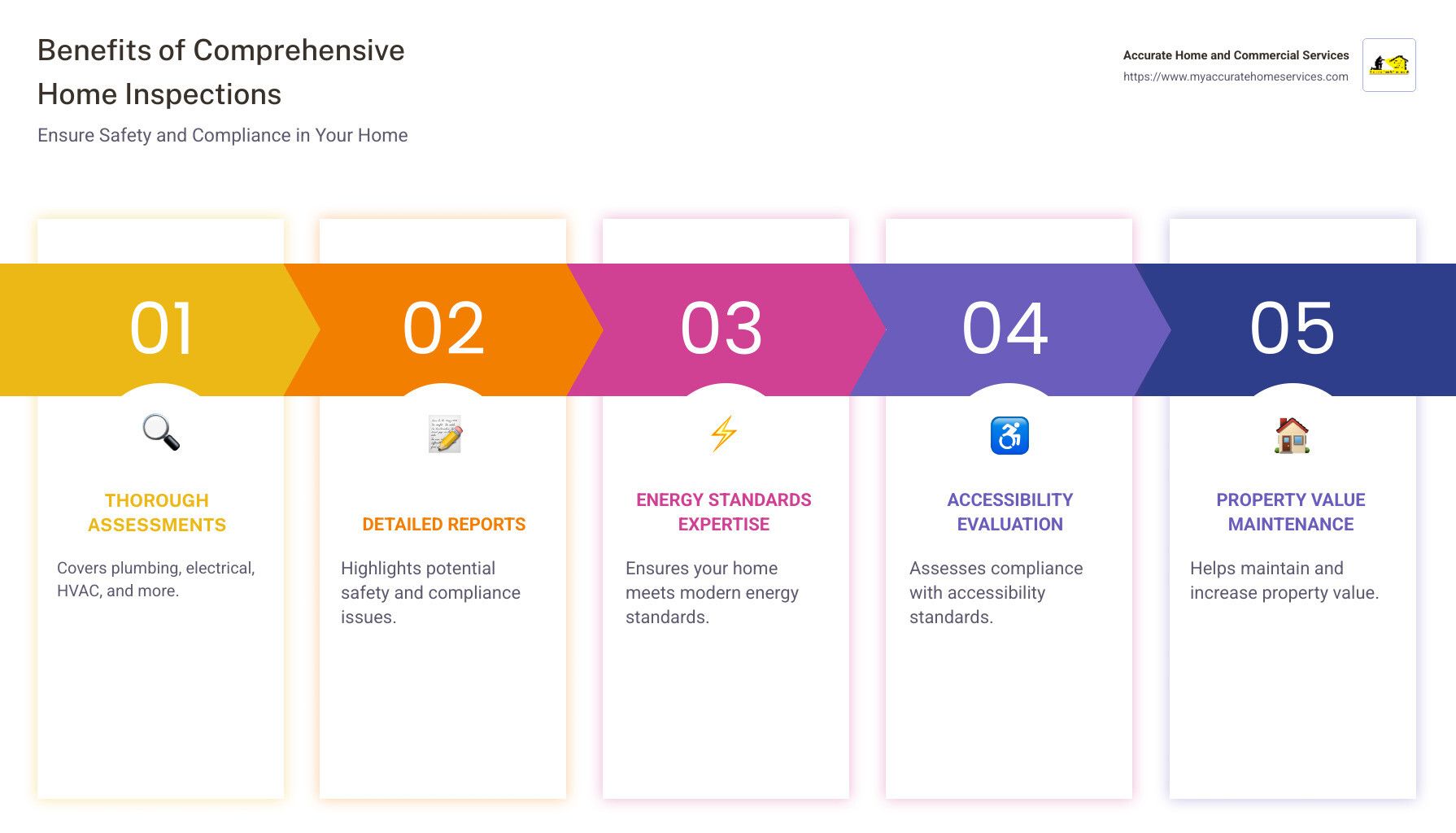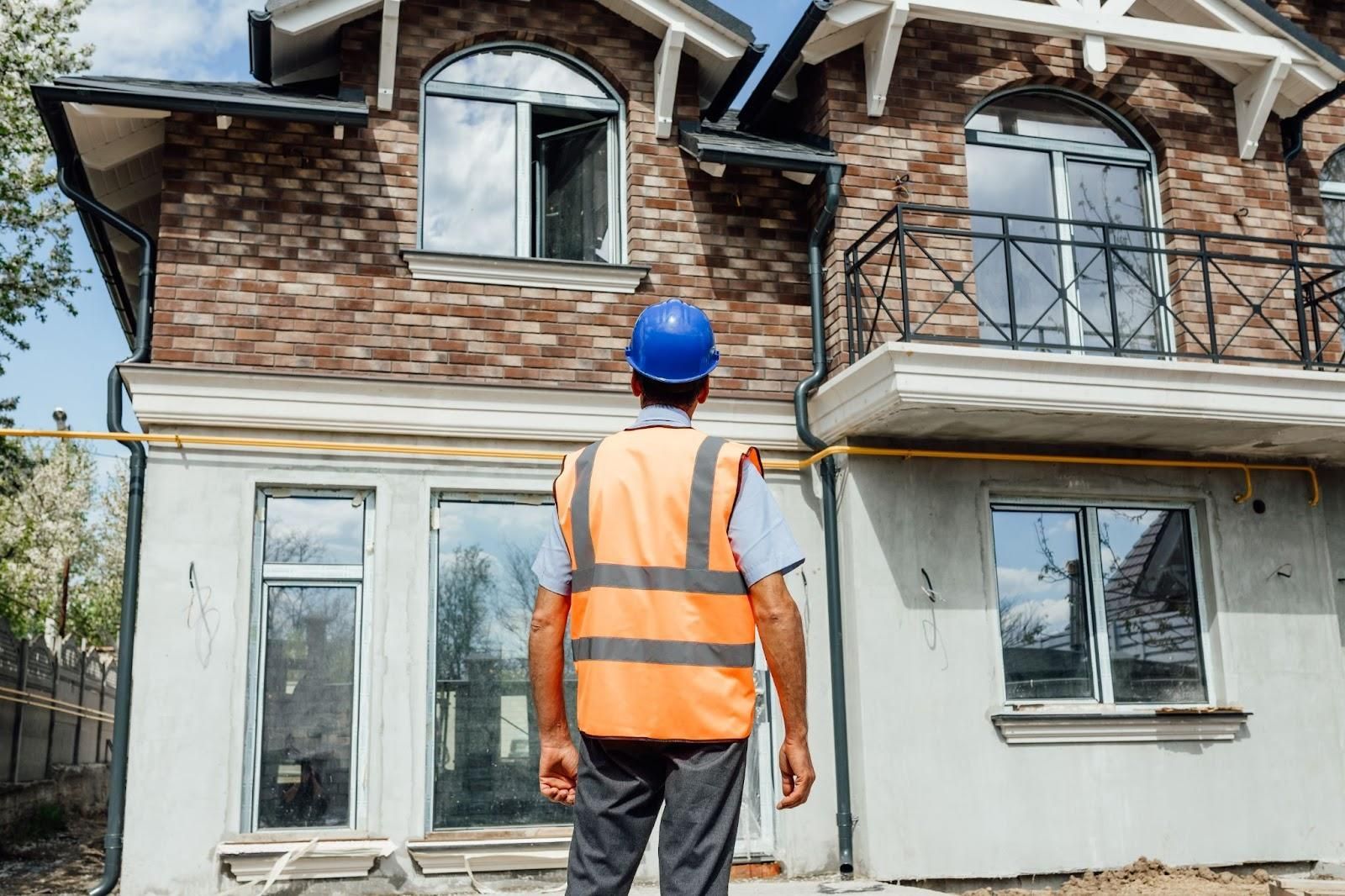Home Sweet Humble: Finding the Right Inspection Service
When it comes to home inspection humble tx, you'd want to ensure your investment is safe and sound. Accurate Home and Commercial Services offers comprehensive inspection services to provide Houston homeowners with peace of mind.
Here's a quick overview of what you should expect:
- Thorough assessments covering plumbing, electrical systems, HVAC, and more.
- Detailed reports that highlight potential safety and compliance issues.
- Expertise in energy and accessibility standards for modern living.
Accurate Home and Commercial Services, with locations across Greater Houston, stands out with an established reputation in Porter, New Caney, The Woodlands, and more. Led by experienced inspectors like Larry Fleming, the team is dedicated to providing reliable and efficient services custom to your needs.
Take advantage of the thorough service, whether you're buying, selling, or just need a check-up to maintain your property’s value and safety.

Understanding Home Inspections
Home inspections are a critical step in the home-buying process, ensuring that your potential investment is safe and sound. Whether you're purchasing a new home or maintaining your current one, a thorough evaluation can save you from future headaches.
Inspection Services
A home inspection involves a detailed examination of a property's key systems and structures. Accurate Home and Commercial Services provides a variety of inspection services to meet your needs. These include:
- Structural evaluations to check the integrity of the foundation and framing.
- Roofing system checks to identify leaks or damage.
- Plumbing system assessments to ensure there are no hidden leaks or issues.
- Electrical system reviews to confirm safety and compliance.
- Heating and air conditioning inspections to verify efficiency and functionality.
Home Evaluation
During a home inspection, inspectors will evaluate the overall condition of the property, identifying any existing problems or potential issues. This evaluation helps homeowners prioritize repairs and maintenance, ensuring the home remains in good condition. The goal is to provide a comprehensive report that clearly outlines the findings, helping you make informed decisions.
Property Safety
Ensuring property safety is a top priority for any homeowner. Inspections can reveal hidden dangers like faulty wiring or structural weaknesses that could pose safety risks. By identifying these issues early, you can address them before they become costly problems.
Accurate Home and Commercial Services, with their certified inspectors and commitment to quality, is dedicated to protecting your investment. Their inspections are designed to provide peace of mind, knowing that your home is safe and up to standard.
This understanding of home inspections is crucial for anyone involved in real estate transactions or property maintenance. By choosing a reliable service, you can ensure your home is a safe and sound investment.
Next, we'll dive into what to expect during a home inspection in Humble TX, including a closer look at the specific systems and potential red flags.
Home Inspection Humble TX: What to Expect
When you schedule a home inspection in Humble TX, you'll want to know what areas the inspection will cover. Let's break down the key components:
Structure Evaluation
The structure evaluation is a foundational part of any home inspection. Inspectors will examine the integrity of the foundation, walls, ceilings, and floors. They look for cracks, uneven settling, or any signs of structural weakness. This ensures the home is safe and stable. Fixing structural issues can be costly, so it's important to catch them early.
Roofing System
A thorough check of the roofing system is essential. Inspectors will assess the roof's age, condition, and any signs of damage like missing shingles or leaks. They might use drones for a closer look, especially on hard-to-reach areas. A healthy roof means protection from the elements and prevents water damage.
Plumbing System
The plumbing system inspection checks for leaks, water pressure, and pipe condition. Hidden plumbing issues can lead to water damage or mold, both of which can be expensive to repair. Inspectors will look at visible pipes, water heaters, and fixtures to ensure everything is functioning properly.
Electrical System
Safety is a priority when it comes to the electrical system. Inspectors will check for faulty wiring, proper grounding, and overall compliance with safety standards. Electrical issues can pose fire hazards, so it's crucial to address them promptly. A detailed inspection will help ensure your home is electrically sound.
Heating and Air Conditioning
Finally, the heating and air conditioning (HVAC) systems are evaluated for efficiency and functionality. Inspectors will examine units, thermostats, and ductwork to ensure they are in good working order. Properly functioning HVAC systems are vital for maintaining comfortable indoor temperatures and can save on energy costs.
Understanding these components can help you prepare for a home inspection, ensuring your potential home is a worthy investment. Up next, we'll discuss the red flags to watch for during these inspections.
Top Red Flags in Home Inspections
When getting a home inspection in Humble TX, it's crucial to keep an eye out for potential red flags. These issues can significantly impact your home's safety and value. Let's explore the top concerns:
Electrical Damage
Electrical problems are a serious concern during home inspections. Common signs include buzzing outlets, frequent circuit breaker trips, and discolored wall plates. These issues might indicate outdated wiring or overloaded circuits, which pose fire hazards.
Ignoring these signs can lead to costly repairs and safety risks. Make sure your inspector thoroughly checks the electrical system for any red flags.
Dampness Signs
Dampness in a home can lead to mold growth and structural damage. Look for water stains on ceilings, walls, and floors. Musty odors can also be a clue. Inspectors should use tools like moisture meters to detect hidden dampness that could escalate into bigger problems.
Uneven Temperature
Uneven temperatures in different parts of the house may indicate HVAC issues. Cold spots or rooms that are too warm can mean the heating and cooling systems aren't working efficiently. This could lead to higher energy bills and discomfort. Inspectors should check the functionality of the HVAC system to ensure it's distributing air evenly throughout the home.
Hidden Issues
Some problems aren't immediately visible. Hidden issues like foundation cracks, plumbing leaks, or termite damage can go unnoticed without a thorough inspection. Experienced inspectors use advanced tools like infrared scanning to uncover these concealed problems.
Being aware of these red flags can help you make an informed decision about your potential home purchase. Up next, we'll guide you on how to choose the best home inspection service.
How to Choose the Best Home Inspection Service
Selecting the right home inspection service is vital for ensuring your future home is safe and sound. Here are some key factors to consider:
Certified Inspectors
Always opt for certified inspectors. Certification means they have the necessary training and expertise to spot potential issues. In Texas, inspectors should be licensed by the Texas Real Estate Commission (TREC). A certified inspector is more likely to provide a thorough and reliable assessment of your home.
Recommendations Matter
Ask for recommendations from friends, family, or your real estate agent. Personal experiences can give you insights into an inspector’s thoroughness and professionalism. Online reviews are also a valuable resource. Look for inspectors with consistently positive feedback, indicating a track record of customer satisfaction.
Thorough Reports
A detailed inspection report is crucial. The report should cover all major home systems, including the structure, roofing, plumbing, and electrical systems. It should also highlight any issues found, with clear photos and descriptions. A thorough report helps you understand the condition of the home and any repairs needed.
Latest Technology
Choose inspectors who use modern tools and technology. Advanced equipment like infrared cameras and moisture meters can uncover hidden problems that are not visible to the naked eye. These tools help ensure a more comprehensive inspection, reducing the risk of missing critical issues.
By focusing on these aspects, you'll be better equipped to select a home inspection service that meets your needs. Next, we'll address some frequently asked questions about home inspections.
Frequently Asked Questions about Home Inspections
How much should a home inspection cost in Texas?
In Texas, home inspection costs can vary based on the size and location of the property. For a typical 2,000 sq. ft. home, you might expect to pay between $300 and $500. However, additional services like pool inspections or advanced technologies such as infrared scanning might come with extra fees. It's a small price for peace of mind and protection against potential future expenses.
What is included in a Texas home inspection?
A standard Texas home inspection covers several critical areas of the property to ensure safety and functionality. These areas include:
- Foundation and structural integrity
- Roofing system and attic
- Plumbing system, checking for leaks and proper function
- Electrical system, ensuring safety and compliance with standards
- Heating, ventilation, and air conditioning (HVAC) systems
Inspectors will also look at windows, doors, and appliances. Each inspection adheres to Texas standards, ensuring a thorough evaluation of the home's condition.
How do I find a good home inspection?
Finding a reputable home inspection service involves a few key steps:
- Seek recommendations from trusted sources like friends, family, or real estate agents who have had positive experiences.
- Check credentials to ensure the inspector is licensed by the Texas Real Estate Commission (TREC) and holds relevant certifications.
- Review online feedback to gauge customer satisfaction. Look for inspectors with consistently high ratings and detailed reviews.
- Assess thoroughness by asking for a sample inspection report. A good report should be detailed, easy to understand, and include photos and descriptions of any issues found.
- Inquire about technology used during inspections. Modern tools like infrared cameras can detect hidden problems, offering a more comprehensive assessment.
By following these steps, you can ensure you find a reliable and thorough home inspection service to safeguard your investment.
Conclusion
Choosing a home inspection service is a crucial step in securing your property investment. Accurate Home and Commercial Services, based in Conroe, TX, stands out for their commitment to customer satisfaction and property safety. Their team of experienced inspectors offers comprehensive services, ensuring that every aspect of your home is thoroughly evaluated.
With their detailed inspections, Accurate Home and Commercial Services provides peace of mind to homeowners in Humble, TX, and the Greater Houston area. They use the latest technology and adhere to Texas standards, guaranteeing that each inspection is both thorough and precise.
Customer satisfaction is at the heart of their service. They prioritize clear communication and detailed reports, helping you understand your home's condition and any potential issues. This transparency ensures you can make informed decisions about your property.
For those looking to ensure their home is safe and sound, consider reaching out to Accurate Home and Commercial Services for a professional and reliable home inspection. Their dedication to quality and safety makes them a trusted partner in your home-buying journey.











